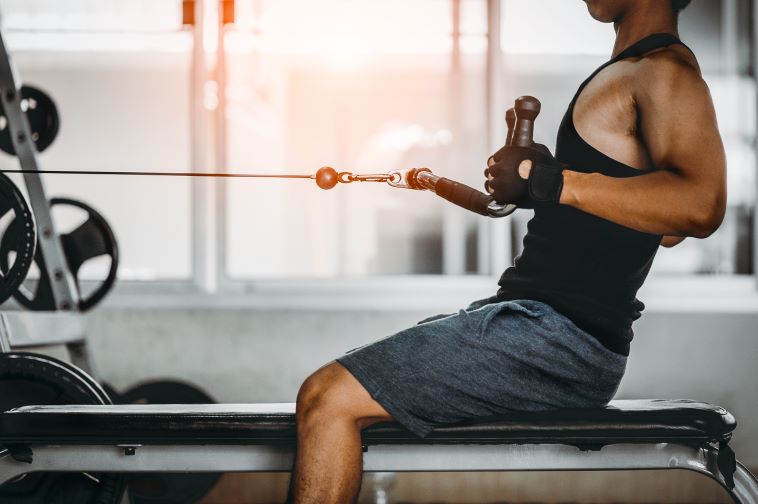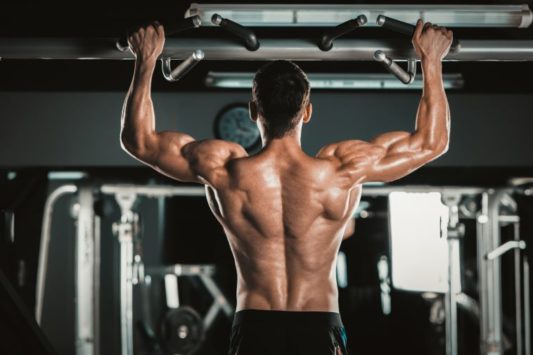Teres Minor & Teres Major
How To Target These Muscles And Why
Anatomy of the Back
Firstly, let us make sure we understand the anatomy of the back. As I’m sure you’re already aware, the muscles which comprise the majority of the back are the trapezius (traps) and the latissimus dorsi (lats). However, there are a number of other muscles involved in the makeup of the upper portion of the posterior chain including the rhomboids, rear deltoid, levator scapulae, erector spinae and many more. The two muscles that I’d like to draw attention to on this occasion are the Teres Minor and Teres Major.
Teres Major: Anatomy and Importance
Above the latissimus dorsi, you’ll find the Teres Major. This muscle assists in medially rotating and extending/adducting the humerus, and it attaches to the scapula as well as the humerus. As the Teres Major is very closely inserted to the latissimus dorsi, it performs the same joint actions at the shoulder.
Teres Minor: Anatomy and Importance
Situated just above the Teres Major, this muscle is part of the rotator cuff and aids in lateral/external rotation of the humerus and prevents the humeral head from sliding upwards when abduction is performed. Although the Teres Minor originates just above the Teres Major, it actually inserts into the greater tubercle of the humerus which is why it performs external rotation and is, therefore, a part of the rotator cuff muscles and the Teres Major isn’t.
Exercises for The Teres Major
In order to target the Teres Major, horizontal pulling movements are essential. I’ve listed a few below which you should definitely consider incorporating in your back/pull day routine!
Bent-Over Dumbbell Row (Uni-Lateral)
This exercise is fantastic for targeting the Teres Major & Minor muscles, make sure you plant your feet either side of a bench and use one hand to rest on it while keeping your back straight and shoulders retracted.
Keep your head straight throughout the movement and pull through the elbow until contraction. Hold the lift at the top for a second, and slowly perform the eccentric portion of the movement, allowing the dumbbell to gradually stretch out the Teres Major but not protract the shoulders.
Seated Uni-Lateral Row
Using machines Uni-Laterally ensures you’re able to balance out volume and target each side of the body equally. During this exercise, it’s important to keep your shoulders aligned and pull through the elbow without letting the shoulder drift back when pulling through.
Keeping your chest up and facing forwards throughout will also help to maintain tight form. Use your resting arm to support your posture by holding onto the chest pad or handle if one’s provided.
Seated Cable Row
This exercise allows for a slightly further degree of extension during the eccentric phase of the movement, in order for the Teres Major to be stretched out fully without the shoulders reaching protraction. This exercise can be performed with a number of grips; however, I would recommend using a close-grip, or a neutral grip bar.
With your feet planted firmly for support, keeping your back straight and chest up, take hold of the weight and enter the starting position in which you should be sitting upright.
Pull through the elbows while keeping your chest up and bring the bar/attachment as far back as possible.
Perform the eccentric part slowly and allow the back to lean forwards slightly while keeping it straight. Just before the shoulders protract, begin to pull back through the elbows and lean back slowly into the contraction.
Exercises for The Teres Minor
In order to target the Teres Minor, external or lateral rotation must be performed. I have suggested some exercises which are beneficial to the Teres Minor below.
Rear Deltoid Fly (Machine, Cable or Dumbbell)
This exercise allows you to externally rotate the shoulders and pinch the Teres Minor into action. Perform the rear deltoid fly with a slight bend at the elbow and treat the movement in a similar way to a row rather than simple abduction.
Ensure your chest is upright and shoulders retracted, pull through the elbows and squeeze at the end of the contraction. Allow the shoulders to minimally protract in order for the muscles to stretch through a full range of motion while keeping your head neutral with your spine.
Face Pulls
Attach a rope to a high pulley just above head height (angle of 30°). Begin the movement by taking hold of the rope with a neutral grip and stepping back so that the selected weight does not touch the stack when your arms are lengthened. Create a slight bend in the legs and begin the movement with arms out in front, while the shoulders are retracted.
Ensure the scapular is engaged at all times; pull through the elbows until your hands are beside each ear. Squeeze the contraction, keeping the shoulders retracted to allow the rope to return back to the starting position keeping the movement under control.
Take-Home Message
Hopefully, this article has provided you with some knowledge and new exercises to perform in order to target those smaller muscles with a little more isolation. Be sure to incorporate a selection of these exercises into your training routine and perform them twice per week for optimal results!
ABOUT THE AUTHOR
George Platt is a Personal Trainer, Online Coach and Fitness/Nutrition Writer. George’s passion for physical activity and health developed from a young age after having open-heart surgery. You can find out more about George via his website or Instagram: @GeorgePFitness93.




